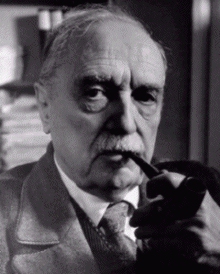Is the New Testament a Gnostic Document?
By
Tom Roberts, PhD
There’s much deception in the air today from a few leading scholars regarding the New Testament text. This is a spin-off from the days of Rudolf Bultmann. The main target was the Gospel of John and its so-called Docetic influences upon the New Testament corpus as a whole. While this notion of proto-gnostism certainly had influence in the early church as Bultmann proved, there is no evidence to suggest the New Testament is gnostic in origin. Even the letter of Colossians with its influence from the Saturnalia holds to the validity of the resurrection by pushing back at the Gnostics who taught that the Savior was so pure if he walked across the snow in bare feet, he would never leave footprints. The apostle John stated the spirit of anti-Christ is that Jesus hasn’t come in the flesh. (1 John 1:18-28) Modern versions of John’s Gospel will sometimes leave out the coming “in the flesh” and render these verses as stating it’s a denial of the Father and the Son. But when one reads the contest about many Anti-Christs coming into the world and out of the church, Christ coming in the flesh becomes abundantly clear.
Gnostic texts indicate the body was seen as evil and represented the fallen world which is ruled by sin. The Hebrews viewed life and the body as good and the world as in need of healing or perfection. So the resurrection would be crucial in our understanding to give us a concept of the new world and new life. Gnostic texts also indicate that hierarchies of demons called the demiurge created our present world and society. Yet there are parallels in literary structure and vocabulary that did move between Essene, Gnostic and Christian writings. Even a Coptic summation of Matthew 5:3, the Beatitudes, has been argued by H. Burgmann that much of this material was a deviation from Essene forms and meditative patterns. The Coptics also had 113 Logia sayings coupled with the 40 days of appearances of Jesus (Acts 1:2-3). So not all Egyptian sources would have agreement with the Gnostic material which was also from that country. Many modern Gnostic scholars such as Andrew Welburn report in the Testament of Levi that his ascent to heaven was to leave this evil world. (see the book A History of Heaven which makes the statement these Gnostic texts sound a little like Protestant Reformational theology which should be no surprise due to the fact that Neo-Platonism had a great deal of sway on the church as it departed from Judaism in many of it forms. This Neo-Plantontic influence upon our traditions has caused our vision to be blurred throughout the Christian Church. Clearly, the New Testament text falls within a Proto-Gnostic era.
Today, Bart Ehrman, Elaine Pagels and Karen King due to the Gnostic leanings of the writings of Thomas, have attempted to push the New Testament literature to be in harmony with second century Gnostic texts. Ehrman states generally in Lost Christainity that there is no baseline from which New Testament can be derived. What a reductionalistic statement! In his Orthodox Corruption of Scripture, Ehrman complains that some of the later texts in the Vulgate and Syriac texts reflect the original intent where he feels the church’s monks corrupted the verses in earlier editions. What’s wrong with this assumption? The Syriac, which a derivative of Aramaic, came from a Greek original. As Robinson, Pierpoint and Sturtz report, in the Byzantine Majority Text Form, the New Testament is 89 to 92 percent stable in most of its readings which show a centered tradition of translation. Phillip W. Comfort and David T. Barrett echo these conclusions. These are the only group of scholars who have classified all 5762 manuscripts to move us away from the eclecticism which pervades our modern scholarly communities. Ever since Nestle’s in his Greek Text and later, by Barbara and Frank Aland, New Testament scholarship has been moving down the eclectic reconstruction of textual readings. They have made many improvements in textual variances but the their reconstructions do not have the stability of the Byzantine text form which was preserved in the Orthodox Greek tradition. This noble tradition has given Western Christianity a stable textual basis for our New Testament. Due to the influence of German rationalism it has been overlooked. Therefore, the general Christian church should revisit the issue of this wonderful text form tradition.






I do think that the small variance are the most interesting. I find the Gnostic gospels amazingly interesting. I guess I see it more an a way get people to think about religion out of the box and that the narrative is not so cut and dry.